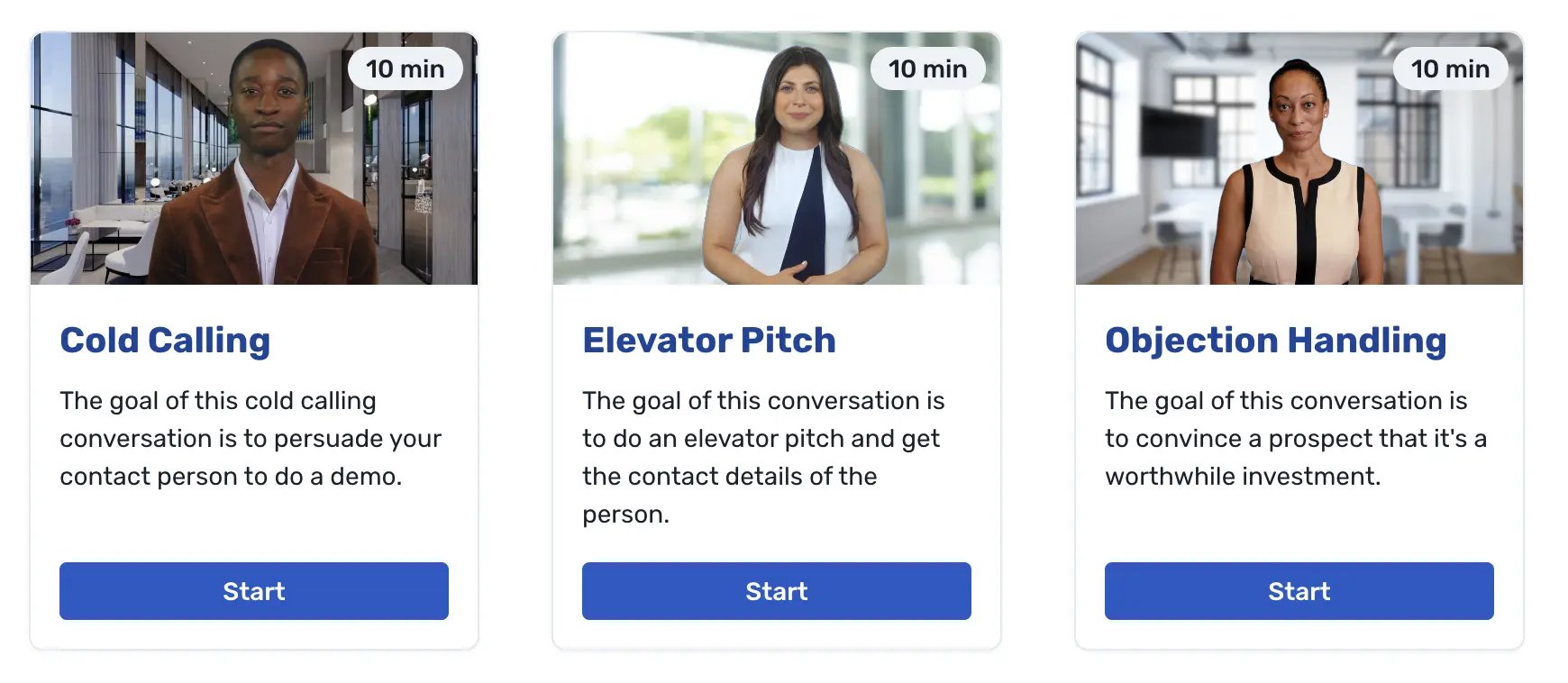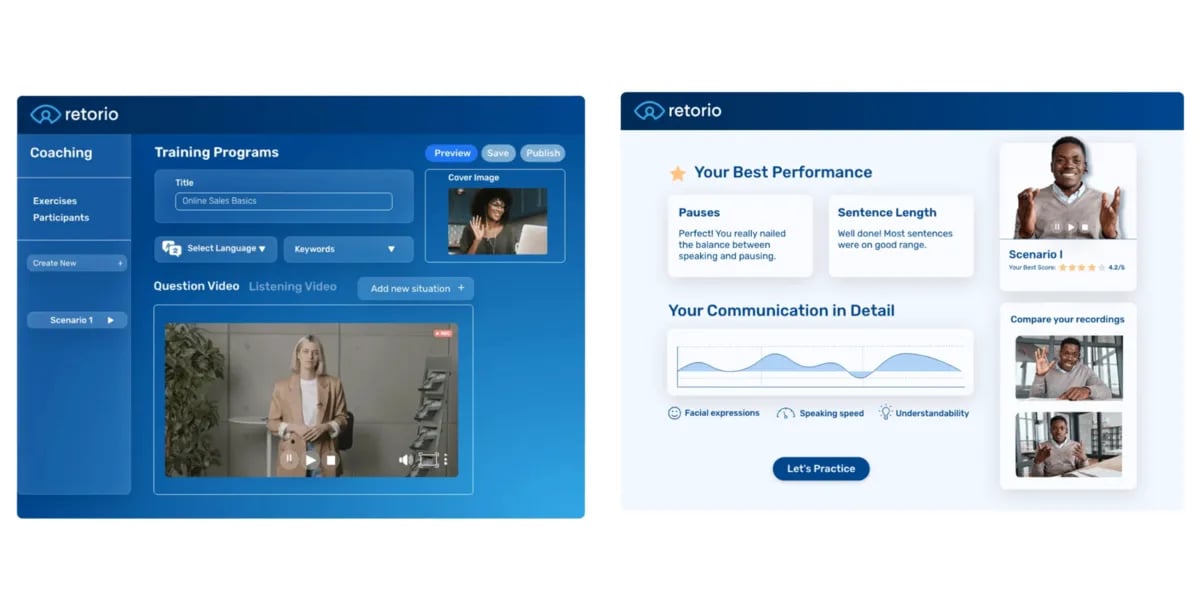Consumer behaviors are constantly evolving, meaning preparing sales teams for the future of selling is more crucial than ever.
To ensure sales teams continue to understand pain points and sell value to their prospects, the SPIN selling methodology was created in 1988 after years of research, with the goal of uncovering the burning question, "What sets the best salespeople apart from the pack?"
It has ever since been a valuable approach to selling value for sales reps globally.
In fact, the SPIN selling methodology is used by 30% of the top 100 biggest companies in the world.
So what exactly is the SPIN sales model?
How can you make sure your sales teams are informed about the sales methodologies that will help them navigate through even the most difficult customer conversations and close more deals?
What's in this article:
What is the SPIN methodology? The 4 SPIN Questions
"The best selling isn't at all about your products and what you can offer. It's very much about the customers and their needs." - Neil Rackham
Every customer has their own unique needs, ideas, and desires.
Every customer conversation is different and requires sales reps to get through the clutter to find out what the customer's pain points and needs are; that's where SPIN selling comes in.
SPIN is a sales methodology that was created by Neil Rackham to help anticipate and navigate tough, unique sales situations with strategic questions.
Simply put, questions are the foundation of SPIN Selling. It's a methodology that ensures only valuable and meaningful questions are posed during the sales process by the sales rep.
Not only does every question have a clear purpose, but the order in which they ask their questions is strategic, too.
SPIN stands for the four stages of the questioning sequence:
Situation questions + examples
Situation questions are the first stage of the SPIN selling method. The goal of these questions is to establish the prospect's current situation.
For example:
-
"What tools do you currently use?"
-
“How do you currently do X at your company?”
-
"How much budget do you have assigned to X?"
-
"Who is in charge of X?"
Problem questions + examples
The next questions in the SPIN model are the problem questions. These questions are meant to reveal whether the prospect has any dissatisfaction with the current processes and identify the potential pains they might ever face. These SPIN selling questions are a great way to highlight the various pain points that your offering will solve for the prospect.
For example:
-
"Can you imagine a better process?"
-
"Does this process ever fail?"
-
"How long does it take your company to do X?"
-
"How much does your organization spend annually on X?"
Implication questions + examples
This is the implication step of the SPIN selling methodology, which takes the answers from the problem questions and helps the prospect think about the consequences or implications of their problems.
For example:
-
"If you continue to experience [previously highlighted problem/pain point], what impact do you think it could have on your organization's bottom line over the next year?"
-
"Would your customer be more satisfied if you did X this way instead?"
-
"How does X impact your team's productivity?"
-
"Has this issue ever negatively impacted your KPIs?"
Need payoff questions + examples
The final set of questions, "need payoff questions", aims to explore the importance to the customer of solving the problem.
The goal here is for the prospect to lead themselves to the value/solution (your offering) as opposed to directly pitching your offering to them as a solution. This way, they lead the path on their own and it avoids a typical sales conversation.
For example:
- "If we could address [previously specified prospect's pain point] with our solution, how do you think it would improve your team's productivity and efficiency?"
- "Do you think solving [problem] would significantly impact you in Y way?"
What are the 4 stages of SPIN selling?
Referring to Rackham's book "SPIN Selling", there are four basic stages of every sales cycle, namely, opening, investigating, demonstrating capability, and obtaining commitment.
The order of these four stages is a critical point that helps sales reps avoid jumping straight to conclusions and assuming pain points.
1. Opening
The beginning of a sales conversation is an essential time to set the tone of trust and build rapport with the prospect. A significant mistake is prematurely jumping into the product's benefits or features during the opening stage.
Instead, sales reps need to seize this opportunity to be patient and ask them how they are, before leading into the questions that will help them gain insight into the prospect's current situation.
2. Investigation stage
The investigation stage of SPIN selling is arguably the most important step of SPIN selling. The goal here is to ask the probing questions, let the prospect talk, and let them essentially diagnose their own problem.
3. Demonstrating capability
Not until the 'demonstrating capability' step should the sales rep introduce their solution; according to Rackham, there are three ways to do this:
| Features | This shows what a product is capable of doing. Eg. a car dealer may highlight how long an electric car's battery lasts. |
| Advantages | This shows how the features are actually used. Eg. "You don't need to go to a petrol station anymore". |
| Benefits | Benefits highlight the outcomes as a result of the advantages. Eg. "You will save time by not needing to go to the petrol station". |
4. Obtain commitment
The final step of SPIN selling, or any sales process for that matter is obtaining the prospect's commitment to your offering, typically in the form of a purchase or agreement to move forward with a solution.
It's important to note that this stage also typically involves negotiations, for instance, on terms and pricing, as well as handling objections.
To learn more about preparing sales teams to navigate confidently through handling objections, check out our in-depth article here.
What is SPIN selling training?
SPIN selling training is a specialized sales training process based on the SPIN selling method, developed by Neil Rackham in his book "SPIN Selling".
Training for SPIN selling is designed to help a sales team learn the ins and outs of SPIN selling and help them formulate a structured method to ask the right questions to uncover a prospect's real needs and pain points in order to effectively sell value to them.
SPIN selling training may be in the form of e-learning courses, in-person traditional sales workshops, AI-powered sales training platforms, etc.
Why is SPIN selling helpful?
A study shows that top-closing professionals in B2B sales on average speak only 43% of the time, allowing prospects to speak 57% of the time.
However, when sales reps don't have a structure during their sales process or aren't equipped with suitable open-ended questions, any sales rep will have trouble building rapport and revealing a prospect's true pain points.
How to train SPIN selling?
There are a few key elements that differentiate an average SPIN-selling training program from a great one. Here are a few key factors that every SPIN selling training should absolutely include:
Interactive role-plays
Role-play training is one of the most effective ways for sales reps to practice navigating through sales conversations before talking with real prospects. The novelty of this approach lies in the fact that sales reps can practice asking questions and following the SPIN structure over and over and ultimately build confidence.
All too often, sales training covers an extensive amount of theory, but reps never get a chance to apply that knowledge before being thrown into the playing field with a real client.
Personalized, on-demand feedback
The benefits of personalized training are well-known - they help learners resonate with the feedback and adapt due to the fact that addresses specific areas where improvement is required. On top of that, when the feedback is delivered to the learner on-demand, learners are more receptive to it and mentally prepared to receive it. This makes it more likely for learners to take feedback on board and show performance change.
Virtual learning
With continuous access to training comes continuous learning. When sales training programs are virtual, sales reps can access them whenever they want, wherever they are. For instance, before a sales call with a new prospect, a sales rep may want to practice their SPIN telling sales strategy to build on their confidence.
AI-powered SPIN selling training
The use of artificial intelligence (AI) in sales training, including SPIN selling training is picking up rapidly for its extensive capabilities that go beyond the capabilities of passive e-learning platforms or traditional in-person sales training courses.
Retorio's AI-powered sales training is already helping organizations globally, including one of the biggest automotive manufacturers in Germany to upskill their sales teams.
Retorio's Al analysis allowed the sales reps to practice their customer interactions and gain insights into skill gaps, as well as receive tangible recommendations for improvement, in a psychologically safe environment. By practicing SPIN selling, and objection handling, among other scenarios they'd likely face during a sales call or in-person conversation, reps could practice navigating through the conversations, identify pain points, and seamlessly integrate the perfect customer-focused pitch.
So, ready to learn how AI can be a game changer in training your sales professionals? Want to make sure every sales rep is aware of the SPIN selling questions before entering a sales call?
It's time to see sales success today and see what Retorio's AI can do for you today!
Al-powered video simulations are becoming widely recognized as an effective method of
employee training due to their interactive capabilities that keep learners engaged.
One of the biggest issues with remote L&D (learning and development) is falling engagement
levels.
A 2023 LinkedIn Learning Report highlighted that "keeping employees motivated and
engaged" during is in fact the biggest priority for executives at companies. Particularly with
the need to have training available in remote settings, engagement has become and evermore
crucial need. With Al simulations, learners are able to not only practice in a psychologically safe
environment, but Al simulations replicate real life situations, giving learners a chance to
practice skills they'd need on their role.
Every industry has its own specific demands and needs. With Retorio’s AI training platform, companies have the opportunity to plug in existing content and pick from Reteorio’s wide library of training content for sales, after-sales, customer service, and leadership training. Furthermore, with generative AI, it is possible to create new learning material with ease.
This way, training content can be 100% tailored to your industry needs, and you can make sure your talents are trained with relevant material. This commitment to customization ensures Retorio’s training is not a one-size-fits-all solution.







